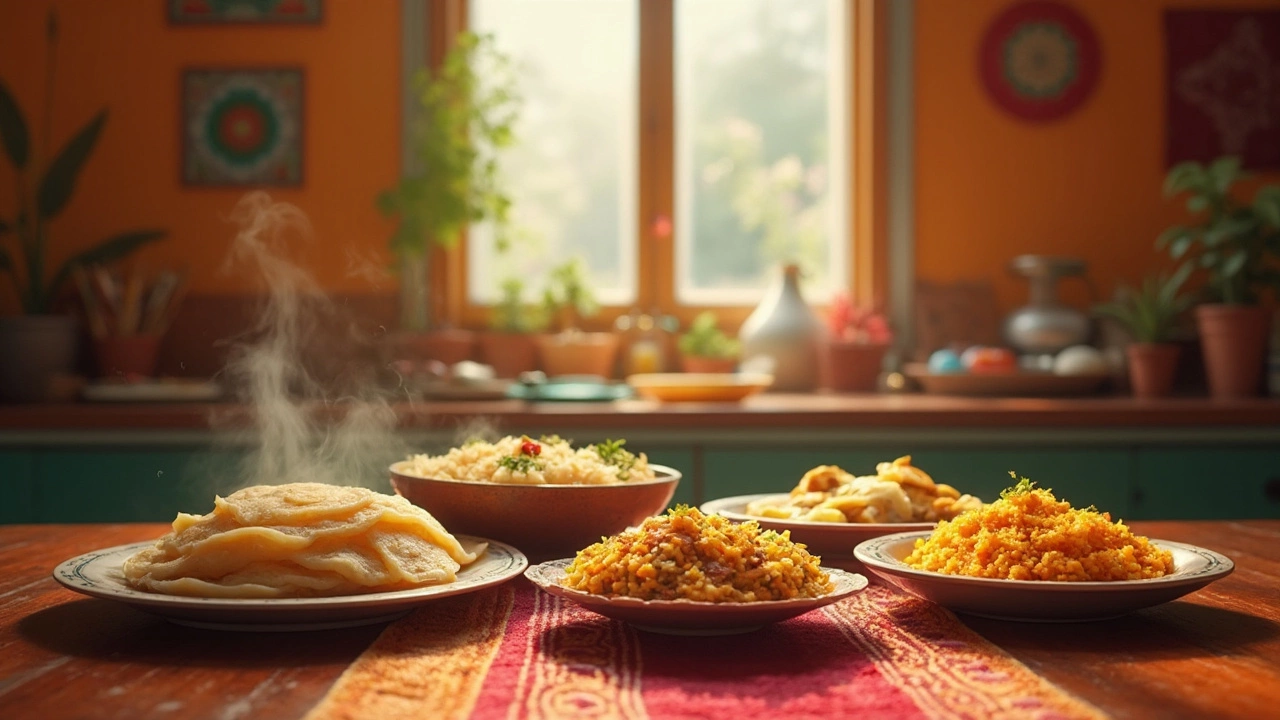Dietary Restrictions in Indian Cooking
When navigating dietary restrictions, the set of food limitations people follow for health, religion, or personal choice, you quickly discover that Indian cuisine is both a challenge and a playground. Vegetarian diet, a plant‑based eating pattern that excludes meat is the most common restriction in India, but the cuisine also adapts to keto diet, a low‑carb, high‑fat regimen that limits grains and sugars, gluten‑free diet, avoiding wheat, barley and rye and even strict low‑sodium diet, which caps salt intake for heart health. These four pillars shape how cooks think about spices, cooking techniques, and ingredient swaps. For example, dietary restrictions encompass vegetarian meals, keto‑friendly versions, gluten‑free adaptations, and low‑sodium tweaks, each demanding a different set of kitchen skills. Managing low‑sodium needs requires mindful seasoning and alternative flavor boosters, while a keto spin often swaps rice or potatoes for cauliflower or paneer. The result is a vibrant matrix where tradition meets necessity, and every restriction sparks a new flavor route.
How Indian Recipes Fit Different Restrictions
Understanding the links among these diets helps you pick the right recipe fast. A vegetarian thali, for instance, already satisfies the meat‑free rule and can be tweaked for gluten‑free diners by swapping chapati with millet flatbreads. Keto seekers can turn a classic dal into a protein‑rich, low‑carb dish by reducing lentils and adding more ghee or coconut milk. Gluten‑free cooking often leans on rice flour, chickpea flour, or gram flour – ingredients that appear in dosa batter, pakoras, and sweets alike. Low‑sodium cooking, meanwhile, leans on fresh herbs, toasted spices, and acid like lemon juice to replace the punch of salt. These adaptations aren’t isolated; they intersect. A single cauliflower rice pulao can be vegetarian, keto, gluten‑free, and low‑sodium all at once, showing that one smart swap can satisfy multiple restrictions. The more you experiment, the clearer it becomes that Indian cooking’s built‑in flexibility turns a perceived limitation into a creative advantage.
Below you’ll find a curated collection of articles that break down each of these angles. From the science behind adding soda to dosa batter for texture to the nutrition facts of chicken tandoori, the guides cover practical tips, ingredient swaps, and cooking methods that respect common dietary restrictions. Dive in to see how you can keep the flavors bold while meeting your personal health or lifestyle needs.

Why Hindus Avoid Pork: Understanding Cultural Dietary Choices
In India, dietary customs vary significantly across different religions and communities. Among Hindus, pork consumption is generally avoided, influenced by cultural, religious, and historical factors. This article delves into reasons behind this dietary preference, shedding light on religious beliefs and health considerations. It also explores how these choices impact popular Indian breakfast options. Understanding these dietary practices can enhance cultural appreciation and help cater to diverse dietary needs.
- Chutney Recipes (13)
- General (11)
- Healthy Living (10)
- Easy Indian Recipes (9)
- Chicken Curry Recipes (9)
- Healthy Indian Snacks (8)
- Paneer Recipes (7)
- Dal Recipes (7)
- Street Food (7)
- Dosa Recipes (7)
-
Dressing Comfortably in India: Wearing Shorts and Trying Street Food
18 Jan 2025 -
What's the American Twist on Chutney?
3 Apr 2025 -
Unlocking the Magical Aroma of Authentic Biryani
29 Jan 2025 -
Exploring the Role of Potatoes in Vegetarian Indian Cuisine
13 Jan 2025 -
Best Flour Varieties for Soft and Delicious Roti: Guide for Home Cooks
26 Jun 2025
26.02.25
Kaia Binari
0